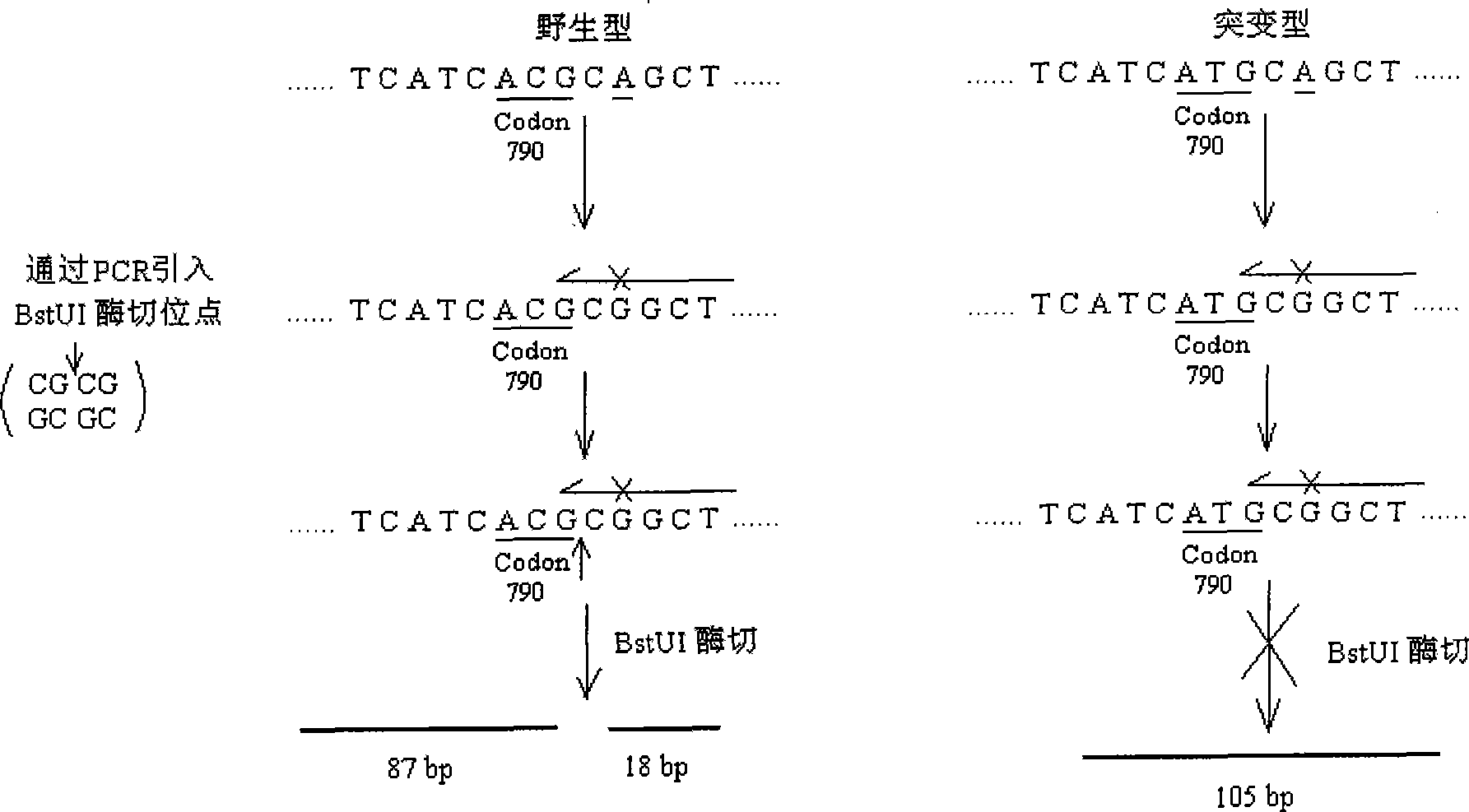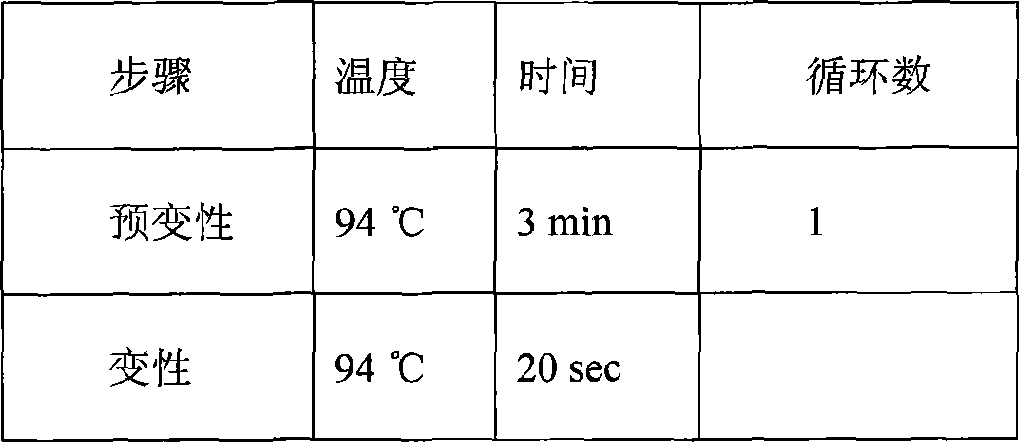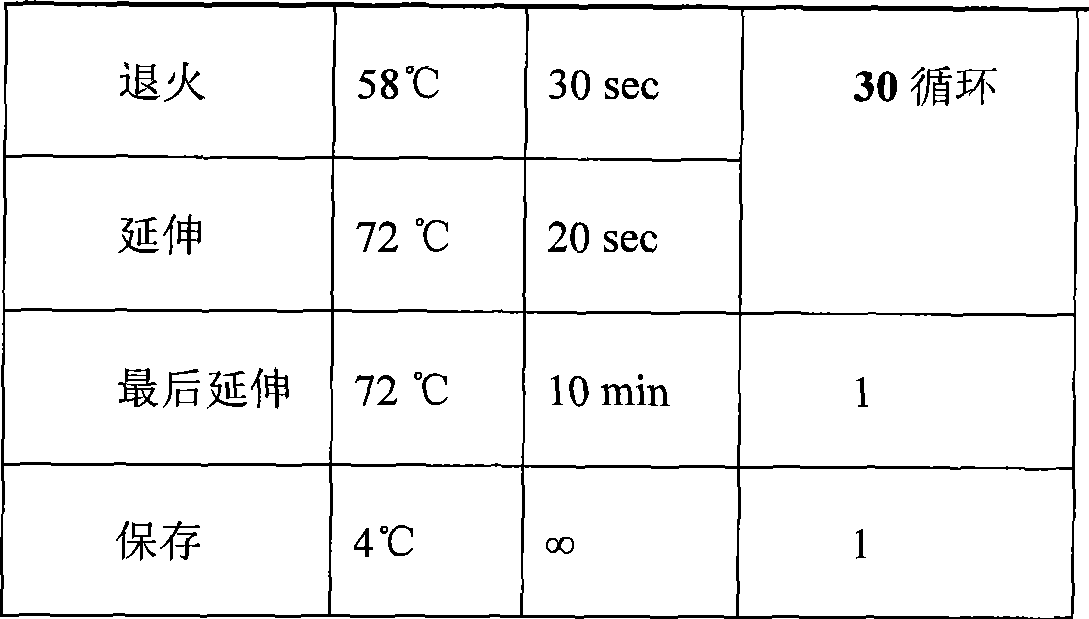EGFR gene extron 20 mutational detecting probe, liquid phase chip and detecting method thereof
A mutation detection and liquid phase chip technology, applied in the biological field, can solve the problems of hindering mutation gene detection and interference, and achieve the effects of simple steps, convenient sampling and good specificity
- Summary
- Abstract
- Description
- Claims
- Application Information
AI Technical Summary
Problems solved by technology
Method used
Image
Examples
Embodiment 1
[0042] Example 1 Preparation of EGFR gene exon 20 mutation detection liquid chip kit
[0043] 1. Probe sequence design and microsphere coating
[0044] For the wild-type and mutant sequences of EGFR exon 20, design specific oligonucleotide probes, including base sequences of SEQ.ID NO: 1-6, for exon 20 wild-type probes, and SEQ.ID NO: 7-12, for exon 20 mutant probes, wherein, SEQ.ID NO: 4-6 is the reverse complementary sequence of SEQ.ID NO: 1-3, SEQ ID NO : 10-12 are the reverse complementary sequences of SEQ ID NO: 7-9, respectively.
[0045] The specific steps of each microsphere coating are as follows:
[0046] (1) Take the microsphere mother solution (purchased from Luminex Company) and vortex to form a microsphere suspension;
[0047] (2) Take out 8ul microsphere mother solution, containing 0.8×10 5 —1.2×10 5 microspheres into a 0.5ml centrifuge tube;
[0048] (3) Centrifuge at 10,000rpm for 3min, discard the supernatant;
[0049] (4) Add 10ul coupling solution (p...
Embodiment 2
[0061] Example 2 Detection of Lung Cancer Serum Samples Using EGFR Gene Mutation Detection Liquid Chip
[0062] 1. Preparation of samples to be tested (plasma, serum and pleural effusion supernatant free nucleic acid can be extracted according to the following methods):
[0063] Refer to the instructions of AxyPrep Whole Blood Genome Small Extraction Kit, the detailed steps are as follows:
[0064] (1) Take about 2.5ml of anticoagulated venous blood or pleural effusion from the patient, centrifuge at 3000rpm for 15 minutes, take 300μl of supernatant and add it to a 1.5ml clean and sterile centrifuge tube;
[0065] (2) Add 500 μl of AP1 buffer solution to the centrifuge tube, vortex and mix well;
[0066] (3) Add 100 μl of AP2 buffer, vortex and mix well;
[0067] (4) Centrifuge at 12,000 rpm for 10 minutes at room temperature
[0068] (5) Draw the supernatant and add it to the adsorption column AxyPrep placed on the 2ml collection tube, cover the lid,
[0069] Centrifuge a...
Embodiment 3
[0108] Example 3 Detection of Lung Cancer Tissue Samples Using the EGFR Gene Exon 20 Mutation Detection Liquid Chip in Example 1
[0109] Get the lung cancer tissue samples of patient No. 1-20 used in the above-mentioned embodiment 2 for detection, and the specific process is as follows:
[0110] 1. Preparation of samples to be tested
[0111] Extraction of DNA from lung cancer tissue samples: take 5-50 mg of tissue samples after lung cancer surgery or biopsy, grind them, and wash twice with PBS solution with pH 7.4; the washed tissue samples are resuspended in 1ml of digestive solution (50mmol / L Tris, 1mmo / L Na 2 EDTA, 0.5% Tween-20, 200ug / ml proteinase K 200, pH 8.5), digest in 55°C water bath for 1 hour, inactivate proteinase K in 99°C water bath for 15 minutes; centrifuge at 12000 rpm for 10 minutes; take the supernatant and pass through phenol - Chloroform-isoamyl alcohol extraction and ethanol precipitation to obtain DNA samples for PCR reactions. DNA can also be ext...
PUM
 Login to View More
Login to View More Abstract
Description
Claims
Application Information
 Login to View More
Login to View More - R&D
- Intellectual Property
- Life Sciences
- Materials
- Tech Scout
- Unparalleled Data Quality
- Higher Quality Content
- 60% Fewer Hallucinations
Browse by: Latest US Patents, China's latest patents, Technical Efficacy Thesaurus, Application Domain, Technology Topic, Popular Technical Reports.
© 2025 PatSnap. All rights reserved.Legal|Privacy policy|Modern Slavery Act Transparency Statement|Sitemap|About US| Contact US: help@patsnap.com



